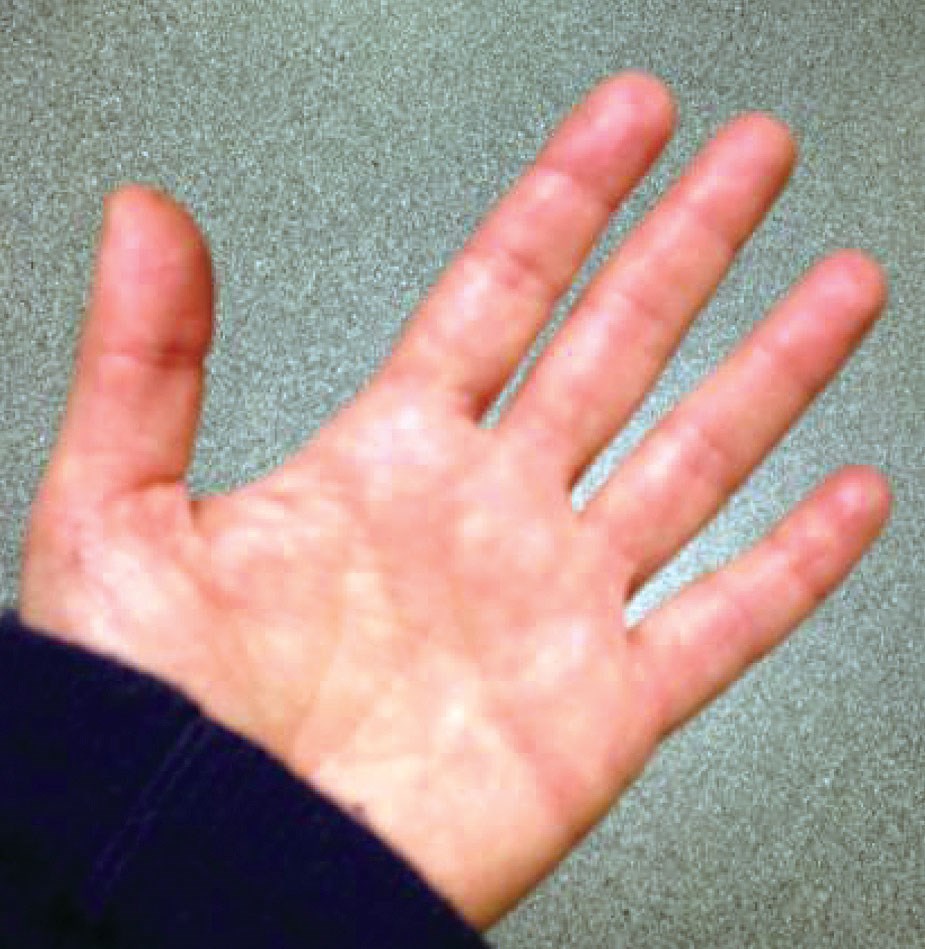Very few people, if any, enjoy the ravages associated with the ageing process. Apoptosis (programmed cell death) occurs throughout life, but for some unknown reason (possibly associated with epigenetics) cellular replacement and therefore matrix volume decreases. The result is that bone loses density and girth, attached muscles atrophy, fat volume decreases and redistributes, intercellular matrix volume decreases, veins thin and become more prominent, and skin loses its collagen and elastin spring and becomes vulnerable to the harmful effects of the sun’s irradiation, including the development of brown spots.
The skin on the dorsal surface of the hand thins and becomes shiny and vulnerable to bruising and trauma. Environmental influences also play a part in the ageing process, in particular detergents and the host of chemicals used in everyday living. Occupation may also be relevant and there is anecdotal evidence that continued usage of the small muscles of the hand may reduce muscle atrophy and retain bone density, e.g. typing and other activities requiring hand dexterity.
Merz, a leading company that specialises in aesthetic products, recognises the importance of accurate assessment tools to assess the effectiveness of treatments and have developed and made available a validated scoring system describing the changes associated with the ageing hand. Unfortunately, it does not accurately take into account the skin changes that in some people are the major indicators of ageing. The score system relies upon fat volume, visibility of veins, and visibility of tendons. It also omits the guttering that develops between the metacarpals, consequent to loss of interossei muscle volume. The Merz grading system can be used to define both surgeon and patient reported outcomes (Figure 1).
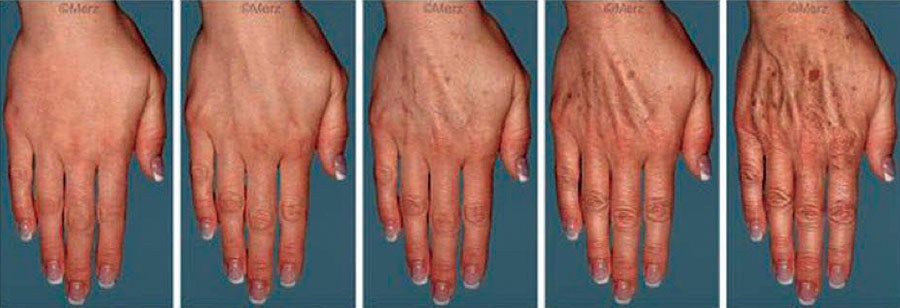
Figure 1: Validated Hand Grading Scale, Merz Aesthetics (Copyright © 2013 Merz Aesthetics).
0. No loss of fatty tissue
1. Mild loss of fatty tissue; slight visibility of veins
2. Moderate loss of fatty tissue; mild visibility of veins and tendons
3. Severe loss of fatty tissue; moderate visibility of veins and tendons
4. Very severe loss of fatty tissue; marked visibility of veins and tendons
Management of the ageing hand
Skin colour
The brown pigment or pale spots associated with ageing can be disguised with cosmetic camouflage. Bleaching agents, cytotoxics, cryotherapy and lasers may have benefit but often result in permanent hypopigmentation. In summer months this may be an issue when adjacent areas suntan normally.
Skin slackening, thinning, shine or dullness
There can be quite favourable results from superficial non-invasive therapy. The ‘Nu Skin Galvanic Spa System’ is often helpful. Bio-absorption of hydrating and re-volumising gels, that stimulate collagen production, add volume and visibly improve the appearance and Merz score. The increase in extravascular tissue tension helps collapse the visible veins and improve the appearance (Figure 2). Unfortunately the results are not long-lasting but this is a treatment package that can be repeated as often as desired within the privacy of the patient’s own home.
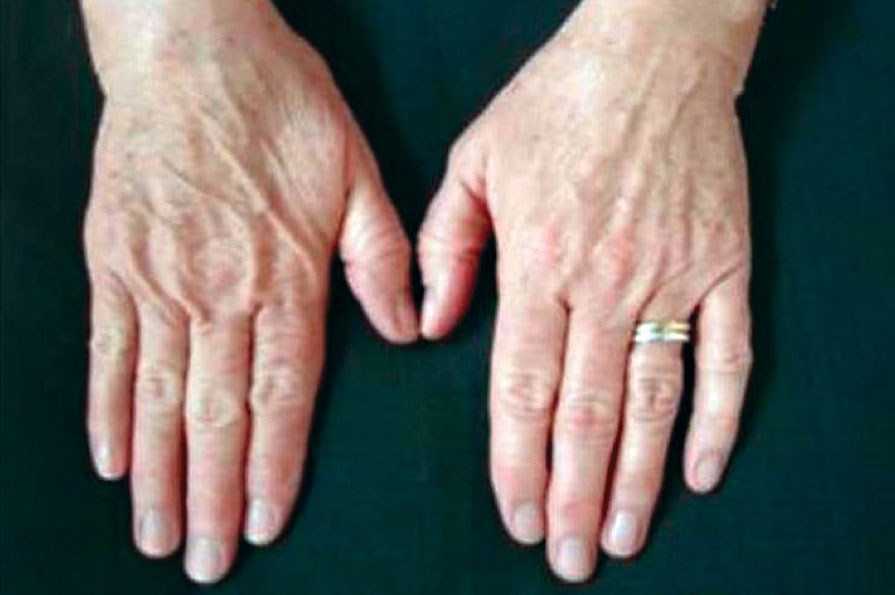
Figure 2: Age LOC rejuvenation of dorsum left hand, right untreated. Merz Grade 3 to Grade 2.
Volume replacement
Fine superficially injected fillers such as Hydrate® (Allergan) can give slightly longer gain but may be rapidly absorbed. More deeply injected products such as Radiesse® (Merz) or hyaluronic acid fillers such as Juvéderm® (Allergan) have a significant role in revolumising. Radiesse should last longer because it relies upon its calcium hydroxyapatite structure to delay absorption of its biodegradable absorbable gel content, until replacement by autologous fibroblast activity and collagen production. Sharp needle injecting techniques are dangerous when using these deeper fillers, with risk from embolisation, and it is essential to use longer blunt needles via webspace stab incisions. Tissue planes are easily found. Fillers may migrate, become lumpy or irregular to surface appearance and may appear translucent.
Autologous fat transfer is always the better option (Figure 3). The end result is more natural and softer and does improve the quality of skin. Although a surgical procedure, fat is free and, in an experienced operator’s care, the results can be outstanding and permanent. The resultant increase in extravascular tension helps reduce the visibility of the dorsal hand veins.
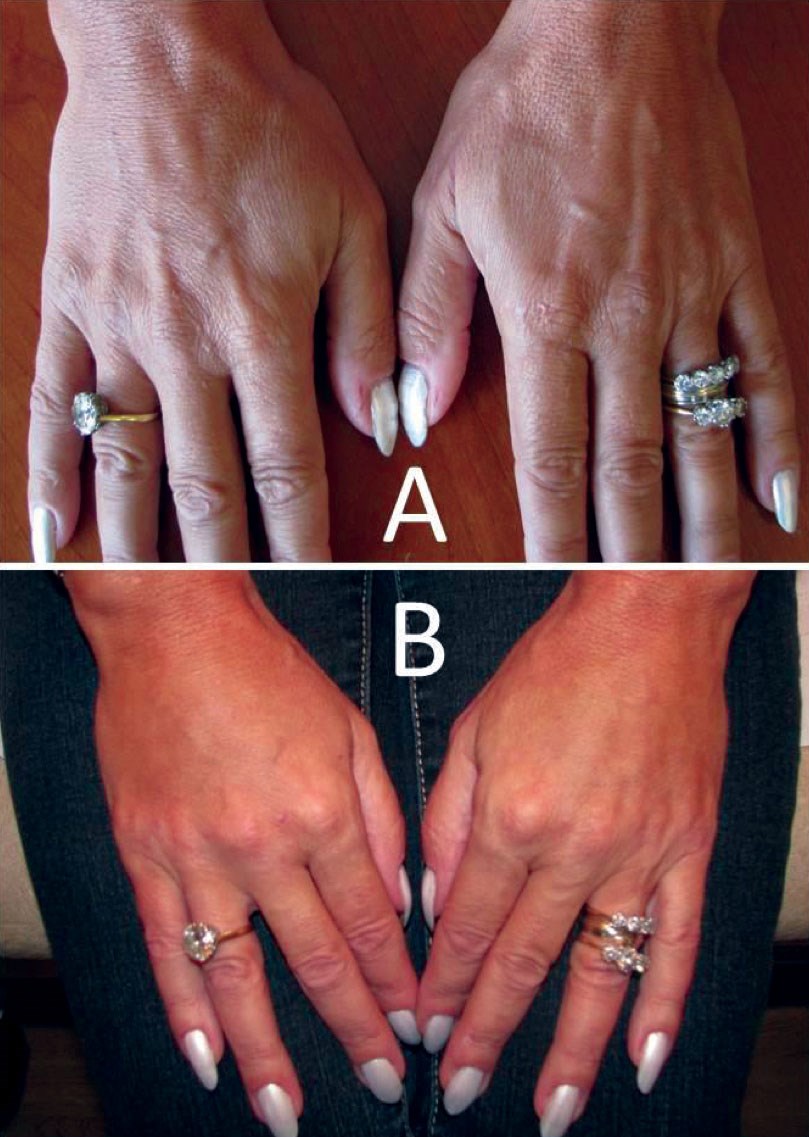
Figure 3: Dorsal hand grafts; A: Pre-autologous fat graft,
B: Post-autologous fat graft. Merz Grade 3 to Grade 0.
Dorsal hand veins
Each dorsal hand vein can be addressed individually with a minor surgical procedure. Sclerosants or injected occlusion agents have no place in management because of painful nodular vessel thrombosis and pigment staining. Vascular surgery techniques can successfully remove the offending vein with minimal trauma. The resultant visual appearance is impressive and there is a probable degree of permanent fullness from tissue oedema that improves the result even further. Clearly it is important that the vascular surgeon avoids severe secondary lymphoedema (Figure 4). Essentially, under general anaesthetic and a tourniquet control, the offending dorsal hand veins are exposed using tiny vein hooks via small stab incisions. The veins can be tied but are better stripped / avulsed. Small compression dressings and elevation are required. It is often better to treat only one hand in an episode to permit freedom of movement of the non-treated hand.
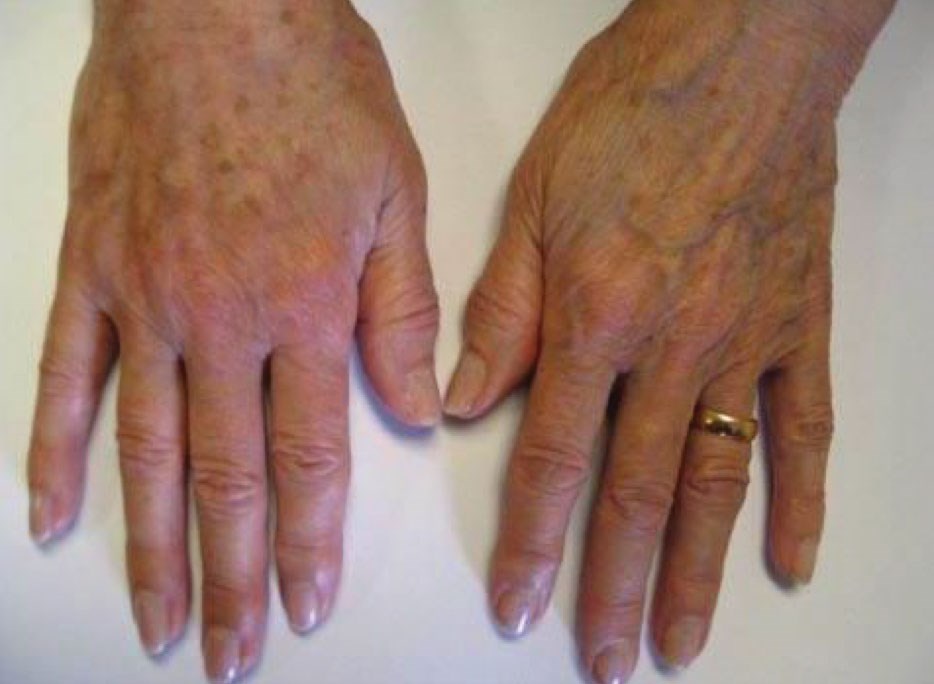
Figure 4: Excision veins dorsum right hand, left untreated. Merz Grade 4 to Grade 2.
Raynaud’s syndrome
Botulinum toxin has been used in non-aesthetic circumstances with good effect, such as in muscular spasticity, hyperhidrosis and gustatory sweating (Frey’s syndrome). It has been used in cases of facial paralysis to give a more symmetrical smile. More recently it has been used in patients who demonstrate an acute response to cold, whereby their fingers become rapidly white – a condition called Raynaud’s syndrome (Figure 5). Localised injections of a small dose of botulinum toxin around the digital arteries results in the fingers staying warm and pink (Figure 6). Obviously this is a short-term treatment but is repeatable. Its advantage over other methods of treatment is that it has very few adverse effects, as the injections are localised, whilst the medication itself can have side-effects and sympathetic nerve blocks in the neck and arm are too distant to manifest a significant response at the level of the fingers.
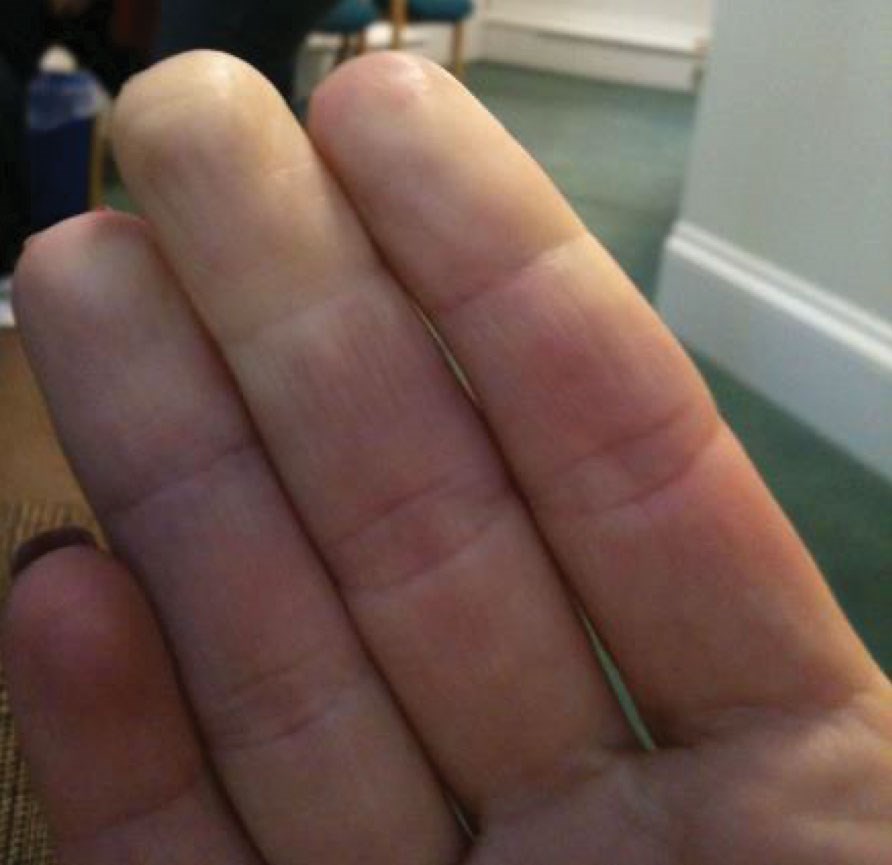
Figure 5: The cold white fingers of Raynaud’s phenomenon prior to botulinum toxin injection.
Figure 6: The normally warm and pink fingers after successful treatment.
Summary
There are options for individuals concerned about the visual appearance of their ageing hands. Often the same patients undergo facial cosmetic procedures ranging from non-surgical injectables to mini-facelifts, and more aggressive surgical procedures. Dorsal hand procedures can be remarkably effective in improving a patient’s feeling of wellbeing and can be carried out at the same time as other aesthetic procedures.
Acknowledgement: The authors would like to thank James D Frame, Research Assistant at Anglia Ruskin University, for his help in compiling this article.
Declaration of competing interests: None declared.

